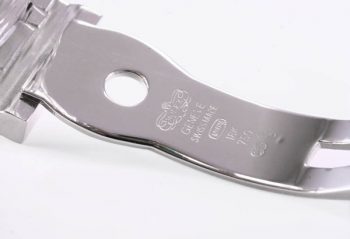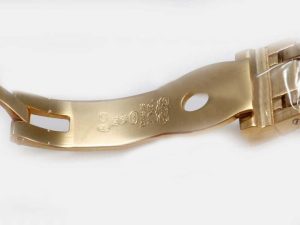
If you plan to buy a new replica watch, you should ask: "Does it have an in-house movement?" To be blunt: the mere existence of an in-house movement does not necessarily equate to a better watch.
Let's begin with what the term actually means. Like other words that have been hijacked by the luxury marketing community and rendered meaningless through misuse and overuse, "in-house" has been reduced to little more than jargon - and has bamboozled watch buyers in the process.
As a matter of fact, an in-house movement's components must all have been made under the roof of the brand whose name shows on the dial. The same company's own employees will also have designed and developed the movement from scratch, then assembled, decorated, and finished it. By this definition, a true in-house movement is a completely rare creature.
To make a real in-house movement needs mastery of a tremendous range of complex and exacting tasks, both technical and creative - and until a decade or so ago, only a few watch-making houses possessed the necessary mixture of skills, time, and money to do it. However, it is because they didn't need to.
Two things changed the industry beyond recognition. The first was the revival of mechanical watchmaking after the 'quartz crisis. Mechanical replica watches were not seen anymore as the everyday necessity that they had been - but as a luxury. Making at least some of their own movements in-house enabled the top-tier brands to develop distinctive and wholly-owned calibers, with horological substance and rarity that justified their high prices.
The second was Swatch Group's determination to drastically cut the supply of ébauches to its competitors. Brands that had taken full use of this ready source of well-proven and cheap movements faced a major crisis. Those with the financial means began to develop their own vertically integrated supply chains; they saw in-house movements as the ways of survival.  That tremendous capital investment has to be recouped. So obviously, an in-house movement will be more expensive than a mass-produced third-party one. And naturally, it will be marketed as being more prestigious.
The fact is that it matters hardly at all where a movement comes from and matters enormously what is done to say movement before it is cased up in a watch and ready to be sold: how much it has been modified or improved. Perhaps the best way to illustrate the silliness of this debate: the replica Breitling and Tudor's movement-sharing collaboration.
The main trouble is transparency - or the lack of it. All of the obfuscation about in-house movements erodes trust. However, please notice that some of the most genuinely "in-house" brands don't even bother to use the term: affordable fake Rolex and Seiko, we're looking at you.
That tremendous capital investment has to be recouped. So obviously, an in-house movement will be more expensive than a mass-produced third-party one. And naturally, it will be marketed as being more prestigious.
The fact is that it matters hardly at all where a movement comes from and matters enormously what is done to say movement before it is cased up in a watch and ready to be sold: how much it has been modified or improved. Perhaps the best way to illustrate the silliness of this debate: the replica Breitling and Tudor's movement-sharing collaboration.
The main trouble is transparency - or the lack of it. All of the obfuscation about in-house movements erodes trust. However, please notice that some of the most genuinely "in-house" brands don't even bother to use the term: affordable fake Rolex and Seiko, we're looking at you.